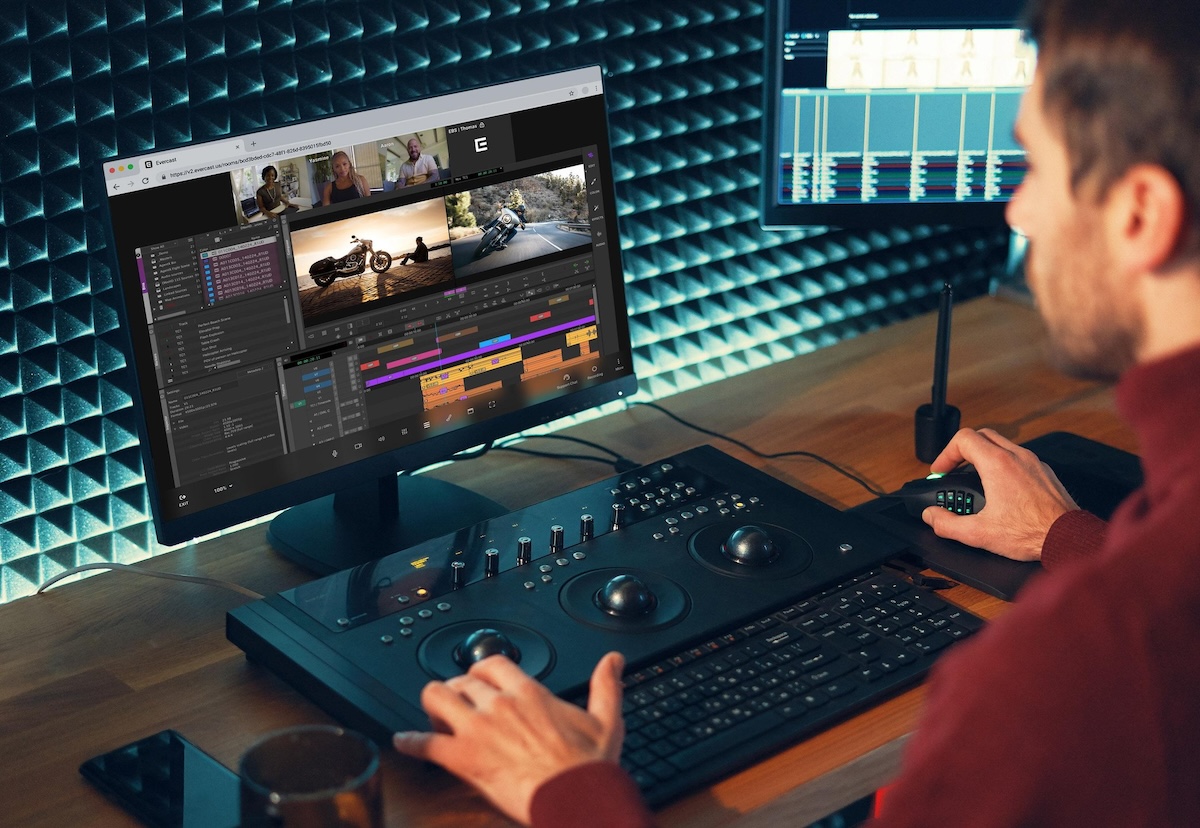DaVinci Resolve by Blackmagic is quickly becoming one of the most popular digital production platforms in the entertainment industry. Not only is the price point appealing, but it is an entire suite of tools that cover all aspects of post production including sophisticated color controls and Fairlight audio.
DaVinci Resolve also allows collaboration within a shared project, making the workflow even easier. However, when sharing projects or updates with directors and creatives that may not have or need access to the software, many teams rely on remote conferencing apps like Zoom to discuss edits, as well as make important decisions.
Unfortunately, this is where the problems begin as CPU and bandwidth issues often make the shared video stutter or lag during the meeting. This is not only frustrating but also makes it hard to discuss. Therefore, many production companies are trying creative “hacks” with Zoom or seeking an alternative platform.
In this article, we’ll take a look at what’s wrong, how to possibly alleviate the issue, and, finally, a solution that simply works.
The problem with Zoom and DaVinci screenshare
In a nutshell, the problem has to do with the CPU as well as the computer’s hardware and software. As Zoom states: “video resolution is dependent upon CPU usage, screen resolution, graphics card, and OS graphic system capabilities.”
Zoom further explains that when sharing a screen or portion thereof “it may require additional CPU resources, which can further affect the overall quality of both the video share and the meeting for the user who is sharing.”
With a CPU-heavy program like DaVinci, you can probably start to understand the issue.
Here Are a Few Things You Can Try
Ditch the workarounds and use Evercast
As you'll see below, a lot of the most common workarounds are complicated.
If all these solutions don’t sound appealing, there is another option that just simply works out of the box. It’s called Evercast and is the only creative collaboration and communication software approved by ALL the major studios. Evercast is used by creatives in every aspect of production for films, TV, and games.

While there are some other platforms that let you chat or annotate the screen, only Evercast has built-in audio/video conferencing that lets everyone in the meeting see and hear each other in real time. Quite simply, it’s the next best thing to being in the same room together. (Ok, there’s no catered lunch, but still.)
Some other cool features we’re sure you’ll love:
- Full HD with <150 millisecond delay (literally faster than the blink of an eye).
- Your team can video and audio chat at the same time they are watching, allowing for instant feedback.
- Ability to draw on screen for more detail.
- No special hardware needed, no “hacks” necessary.
- 24/7 white-glove support.
- Dedicated apps for macOS, Windows, iPhone, iPad, Apple TV, and Apple Vision Pro.
- Supports up to 10-bit 4:4:4 color.
- 5.1 and 7.1 surround sound support.
- 4K/60fps streaming of any editing workflow via Premiere Pro, any other NLE or creative software, media files, and more.
- Encrypted video streams and two-factor authentication required to join secure rooms.
- Approved by ALL major studios and OTT content providers.
Ok, we admit we’re a bit biased since it is our company. But we also sincerely believe in our product and have been developing the software since 2015.
In fact, Evercast is so well-respected and trusted, we’ve been used in some of the biggest tent poles (as well as the smallest indies) to hit any sized screen. We even won an Emmy, woo hoo!
So the next time a meeting comes up and you want to show off a hot new action sequence, don’t be futzing with Zoom. Instead, switch over to Evercast and focus on what’s important: the creative process that makes projects shine.
Create together remotely, in real time

If you're not ready for a solution like Evercast, here are some of the most popular workarounds to stream DaVinci over Zoom.
Check your settings
Make sure you have “optimize for full-screen video” selected when sharing the window.
Conduct a webinar or screen-share-only meeting
This may reduce the lag but also significantly cuts down on the ability to comment and collaborate in real time.
Output your scenes to Quicktime or other media format and then share that screen
Again, this may reduce lag and video quality issues but adds render time to the session, making the meeting itself “lag.” It also reduces the ability to make edits and changes on-the-fly.
Use OBS Studio with the NDI plugin to connect 2 computers
Use the first one to run DaVinci and the other to stream via Zoom. OBS is short for Open Broadcasting Software and is a free, open-source platform that is popular with live streamers. NDI is a plugin from a company called NewTek and is designed specifically to help with video streaming in the remote post production era. Essentially, the first computer runs DaVinci and the second runs OBS, connected via NDI. This way there may be less issues since each application has its own separate CPU (and indeed its own computer).
However, it’s important to note that the two machines must be hardwired together via an Ethernet cable and located on the same LAN (local area network); NDI then helps you broadcast the media over the WAN (wide area network) smoothly. Note that this is quite different from being able to stream a hi-res video source over the internet, but some say it still works reasonably well in certain situations. For a full rundown of how to set it all up, read this tutorial from OBS.
Too complicated? Try this high/low-tech “hack”
Use a second computer’s webcam or your smartphone as the streamer. Point the lens at the monitor running DaVinci (a tripod helps) and run Zoom on the phone or PC.
This may work similar to NDI but could result in lower resolution and color issues since it is a picture of a picture and not the actual source.
















.avif)









.avif)


.avif)